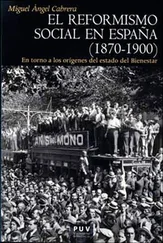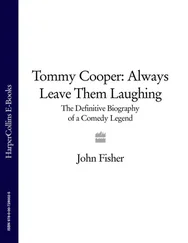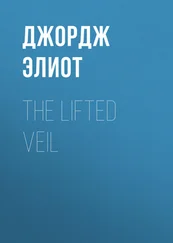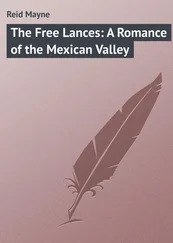In any case, Mormon identity cannot stop here. The second half of the 20 thcentury has been efficient in providing the complex context within which Mormon identity exercises a sophisticated process towards diversity. What being a Mormon meant in the pioneering days differs a great deal from what it means today. Mormon identity experienced a paradoxical development in which consolidation and disruption were both important elements. This process is not alien to the nation at large. The 20 thcentury, for Mormons, is a period of integration into American society—a time when the state of Utah enters the stream of modern fashion, global economy and urban life. The second half of the century was a time for internal consolidation, but also a time for internal and external disruptions that complicated Mormon self-awareness: economic involvement into American economy; political integration; controversial issues, such as feminism; international repercussions; fundamentalism and racial issues all abounded. Eugene England states that the Americanization undergone by Mormons was a sort of “ethical decline” (Bradford, Four 176) and Stacy Burton points to the complications of identity focus: “the future will see a much wider disparity among life experiences called ‘Mormon’” ( Toward 30). In any case, the Mormon experience displays a new array of perspectives that contributes with new meanings to the general and varicolored experience of the American West, historical and contemporary.
In this overview, I have attempted to provide a coherent and impartial recollection of Mormon history so as to make it visible to any reader of this book that the Mormons are part of a continuum that solidifies and ascertains their sense of belonging to a cultural and quasi-ethnic community. My recollection, however, has been neither meticulous nor lengthy, since I have wanted to rely on facts rather than relate them. In other words, my intention—rather than providing an extensive list of historical facts—has been to provide an analysis of how Mormon identity and sense of community evolves from the beginnings of the Church to the days in which Phyllis Barber’s fiction and memoirs are born. The imprints left by those remote days when the community walked in the desert are still visible and persuasive in contemporary Mormon identity. What seems unavoidable is the importance that history still exercises over Mormons, who are still looking back to history and tradition as important elements in their contemporary lives. It is for this purpose that I have considered it relevant to offer a historical overview, which, together with the literary summary that follows, should assist to offer a much more penetrating and qualified reading of a writer who searches for her own identity in her books, especially when her personal search does not avoid direct references to her upbringing as the member of this specific community.
Peculiar but Pervasive:
An Overview of Mormon Literature
In Refuge: An Unnatural History of Family and Place Terry Tempest Williams asserts that “In Mormon culture, that is one of the things you do know—history and genealogy” ( Refuge 13). My interpretation of her statement leads me to believe that in order to understand Mormonism it is compulsory to have a notion of their history. In any case, I also believe that it seems convenient to place Barber’s books in the space of Mormon literary history. Again, if I had limited that space to her contemporary context, this would have reduced the spectrum of information necessary to analyze the magnitude and significance of her contribution. Mormon literature requires a general overview to note the category and credit of its nature. As Karen Lynn states, “Since the early years of Mormon history, Church leaders appear to have granted the arts a legitimate place” (44); but there is a long and complex path from this statement to this other one by William Mulder: “Mormon moderns are clearly stretching the old limits of theme and technique, displaying a mastery of style and structure, of voice and tone and point of view, all working together, all the words ‘combed the same way’” ( Essential 1). It is compulsory to explore that path if one’s aim is to show how—even though it is mentioned among those that Mulder calls “Mormon moderns”—Barber’s fiction can be said to emanate from Lynn’s call for roots. That connecting path offers a wider context for Barber’s fiction, just as a similar method can be used to locate her literary production within a historical context.
Mormon literature is special, peculiar, different, but it is essentially American and Western, even though the international expansion of the Church is opening wider horizons. As I already explained, Mormon literature complicates its definition when this is related to matters of spiritual concern. Edward L. Hart, a renowned Mormon scholar, talks about “double jeopardy” (81). A writer never knows the meaning of his or her creative work before he or she finishes or refines the work of art. This final meaning of the work can be unexpected. That is the first jeopardy, but Mormon writers undergo a second jeopardy: this unexpected meaning can be taken as rejection of or rebellion against the Church. Another prominent Mormon scholar, Eugene England, calls this a “burden” ( Mormon 15). A Mormon writer has to bear a special burden in trying to deal with his or her beliefs and to do so artistically. Wallace Stegner explains the congenital difficulty in writing about Mormonism ( Stegner 114). What makes Mormon literature peculiar is its own nature. When Richard Etulain asks him about Mormon literature Stegner replies: “It’s so separate a culture that you could only write from within it, for people within it—unless you adopted the old Mormon-baiting stance, which is, thank God, dead” 10( Stegner xvii). Stegner expands on this topic to conclude that “Mormon society is so special that a Mormon writer can’t project outside of it. He has to write his fiction from within, for a purely Mormon audience” ( Stegner 127). Stegner was talking in the 1980s and one of the purposes of this introduction is to show how many Mormon writers have tried to overturn Stegner’s statement. Nevertheless, it is significant how Stegner and other scholars such as those mentioned tried to stress the intricate balance between religion and literature. Tension between religion and literature has shown itself to be a narrative source of social, cultural and even religious interest. Literature has shown, in fact, that great fiction can be found everywhere.
That Mormon literature is peculiar is not a loose statement. William Mulder uses Henry James’ confession of a “complex fate” 11to explain how Mormon writers are born in a “closed and comfortable” world but they are involved in a literary world which is “open and secular,” thus experiencing “a similar complexity, a complexity which pervades and enriches their work as individual talents explore Mormon tradition” ( Essential 1). Through this resemblance, Mulder confronts one of the characteristics that other scholars have defined as an obstacle, and a deficiency that hinders the achievement of excellence in Mormon literature: the lack of conflict. “There is not sufficient tension or tragedy,” says England when considering what has been proposed as a criterion to discern the flaws of Mormon literature, “Mormonism answers so well so many basic questions and provides such a satisfying way of life for most of its people” ( Dialogues 1). This is an idea that Karen Lynn summarizes in her theory of the “disallowing of perplexity” (48-49); a complex theory that goes right to the core of Mormonism in that it assumes that Mormons contemplate happiness as an inevitable and personal responsibility, available through dedication and consecration. The second half of the 20 thcentury has proven that many Mormon writers are able to conjure up enough conflict for the creation of elaborate and powerful narratives. The literary tension in their fiction delivers not only purely literary or aesthetic values, but also moral values. Its peculiar nature turns out to be a perfect source for intrigue and imagination. Mormon writers have shown that the limits are notional.
Читать дальше












